Okavango Delta (Botswana)
18 September 2024 09:38 am The Okavango Delta is one of the world's largest inland deltas, where the waters of the Okavango River, which drains the Angolan highlands, spread out, trapped in a tectonic trough. This river once flowed freely across what is now South Africa to the Indian Ocean, but tectonic activity lifted a series of ridges that cut off the river's course. The water from the river now dries up as it traverses the delta, creating a seasonal wetland that has been designated as a UNESCO World Heritage Site.
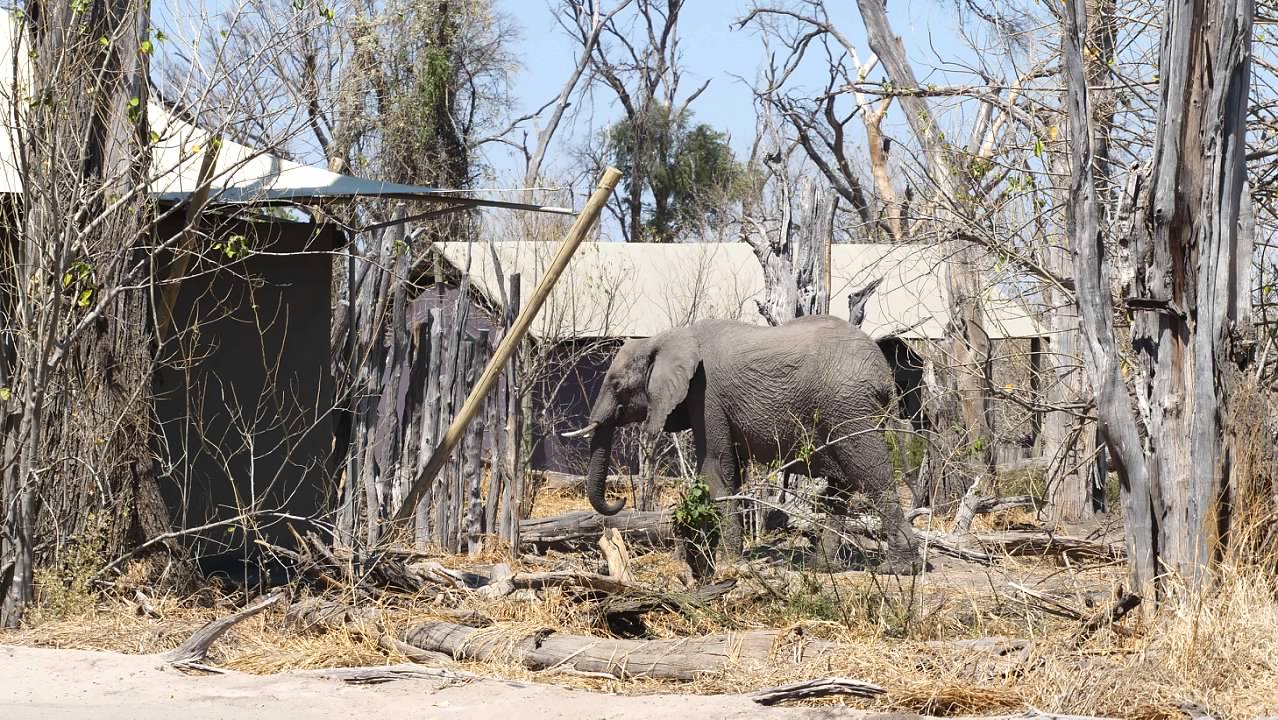 We stayed at the Santawani Okavango Delta Camp, located in the Moremi Game Reserve on the eastern side of the delta, in an area that has dried considerably over the last decade or so. While we would see active water channels during our stay, the channels near our camp have not carried water in at least 10 years, according to the staff members we spoke to. Our accommodations here were a return to the more rustic tents like those we used in Hwange. While they were semi-permanently mounted on concrete pads and had indoor plumbing and king-sized beds, these were definitely tents. There was a pump-filled watering hole in front of the camp, and we had elephants passing through the camp every day going to and from the water.
We stayed at the Santawani Okavango Delta Camp, located in the Moremi Game Reserve on the eastern side of the delta, in an area that has dried considerably over the last decade or so. While we would see active water channels during our stay, the channels near our camp have not carried water in at least 10 years, according to the staff members we spoke to. Our accommodations here were a return to the more rustic tents like those we used in Hwange. While they were semi-permanently mounted on concrete pads and had indoor plumbing and king-sized beds, these were definitely tents. There was a pump-filled watering hole in front of the camp, and we had elephants passing through the camp every day going to and from the water.
We went on a total of five game rides here, and each one had a specific highlight. On our first drive, the afternoon we arrived, we found two female lions with their litters of cubs. When we first arrived, the two females and the older cubs (two or three months old) were sleeping near some logs and brush. As we watched, one of the females got up and walked over to some nearby bushes, where her newborn cubs (maybe three weeks old) were hidden. The older cubs were cute and playful, but the younger ones were absolutely adorable. Watching these cubs nurse was definitely one of the highlights of the trip. Later, we saw a black-backed jackal, a nocturnal predator that we hadn't yet seen, and as the sunset, I was finally able to get a shot of giraffes silhouetted against the setting sun!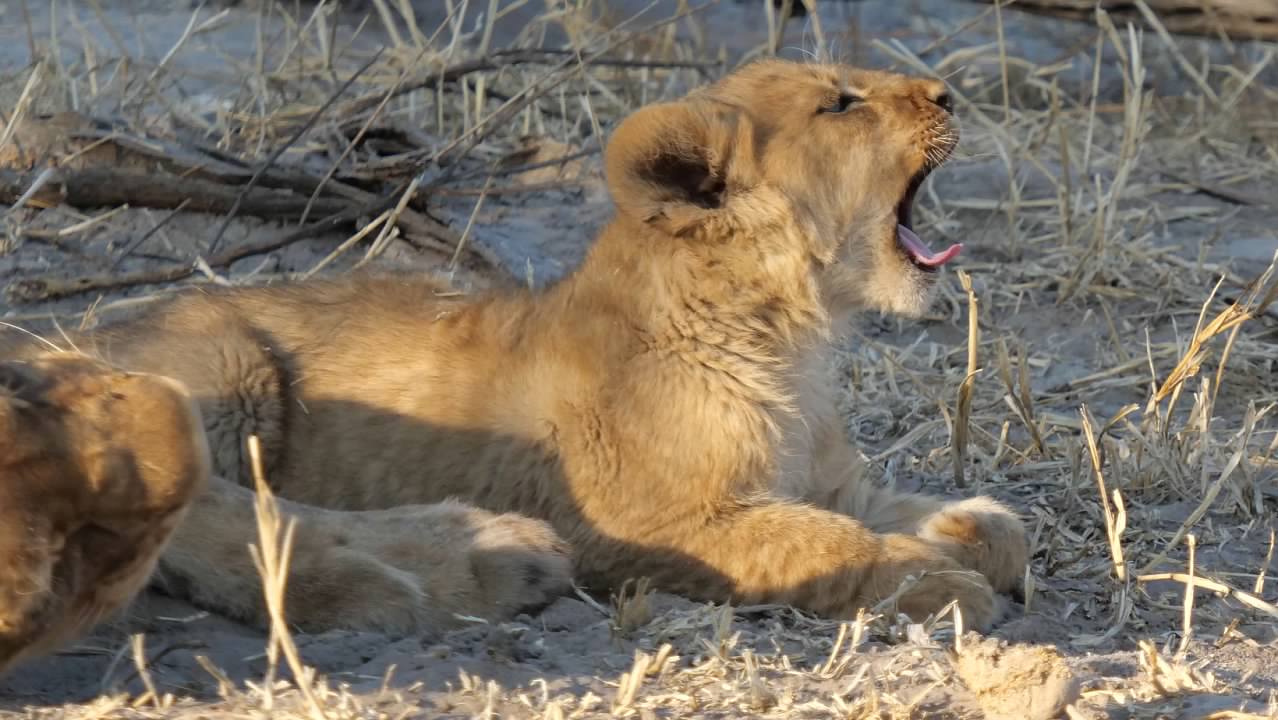
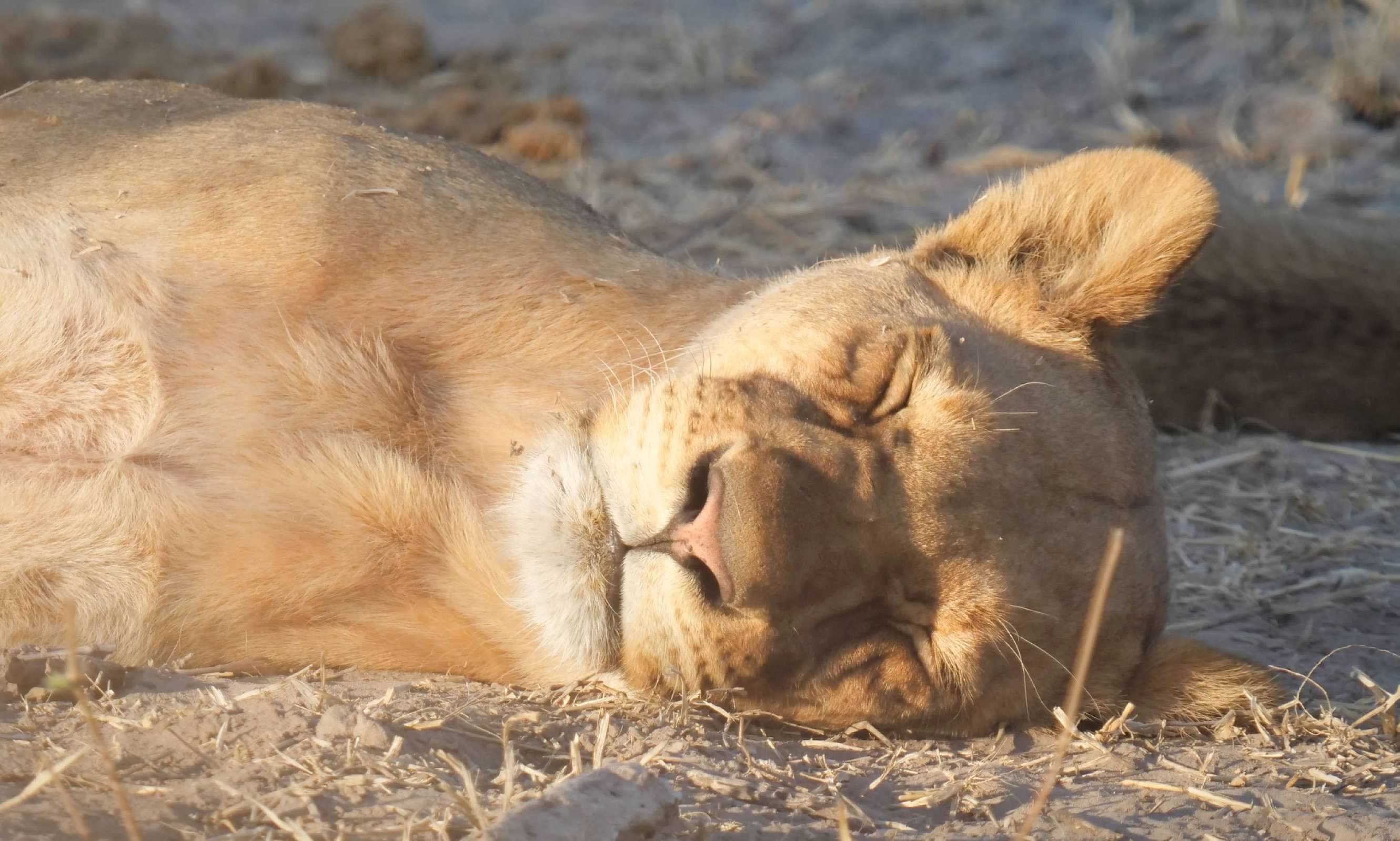
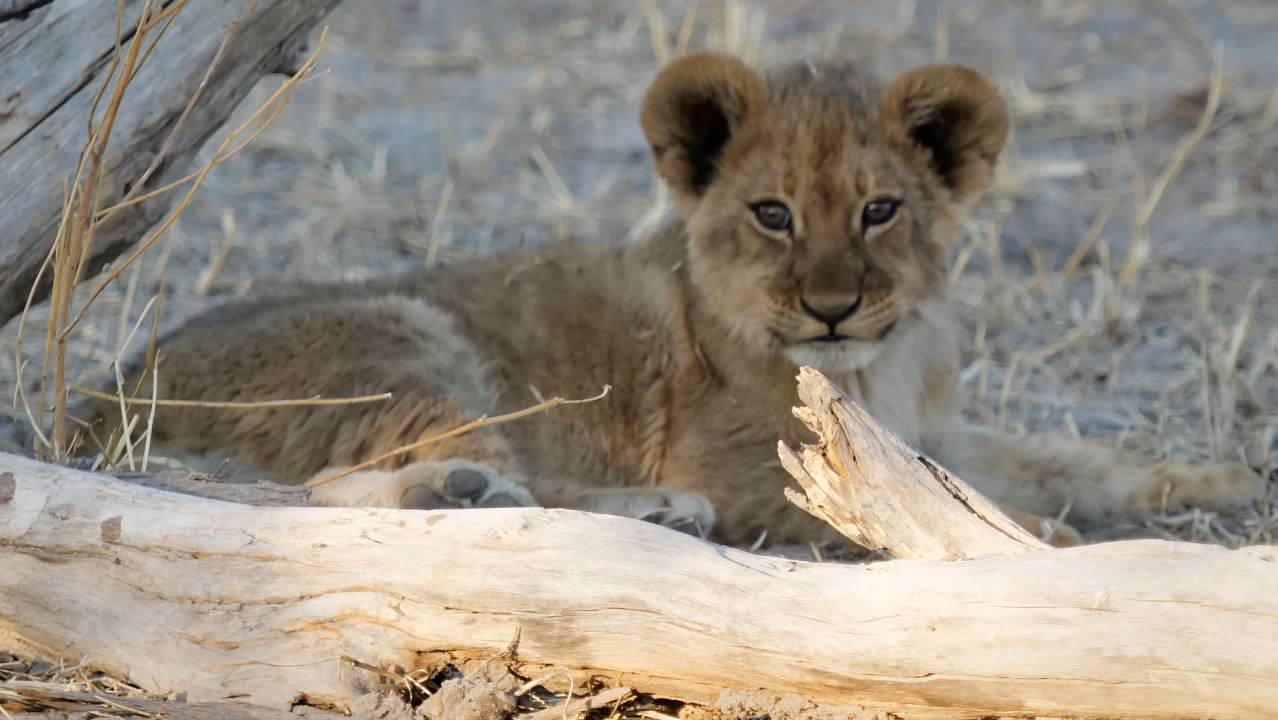
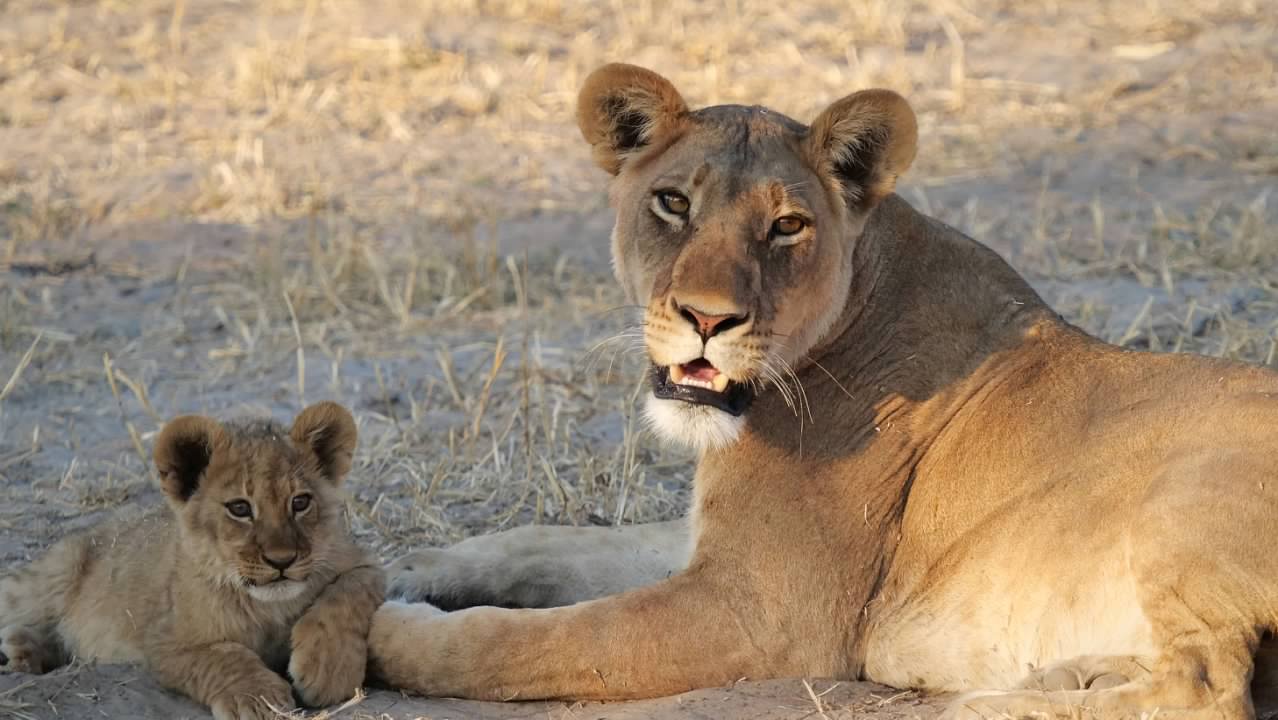
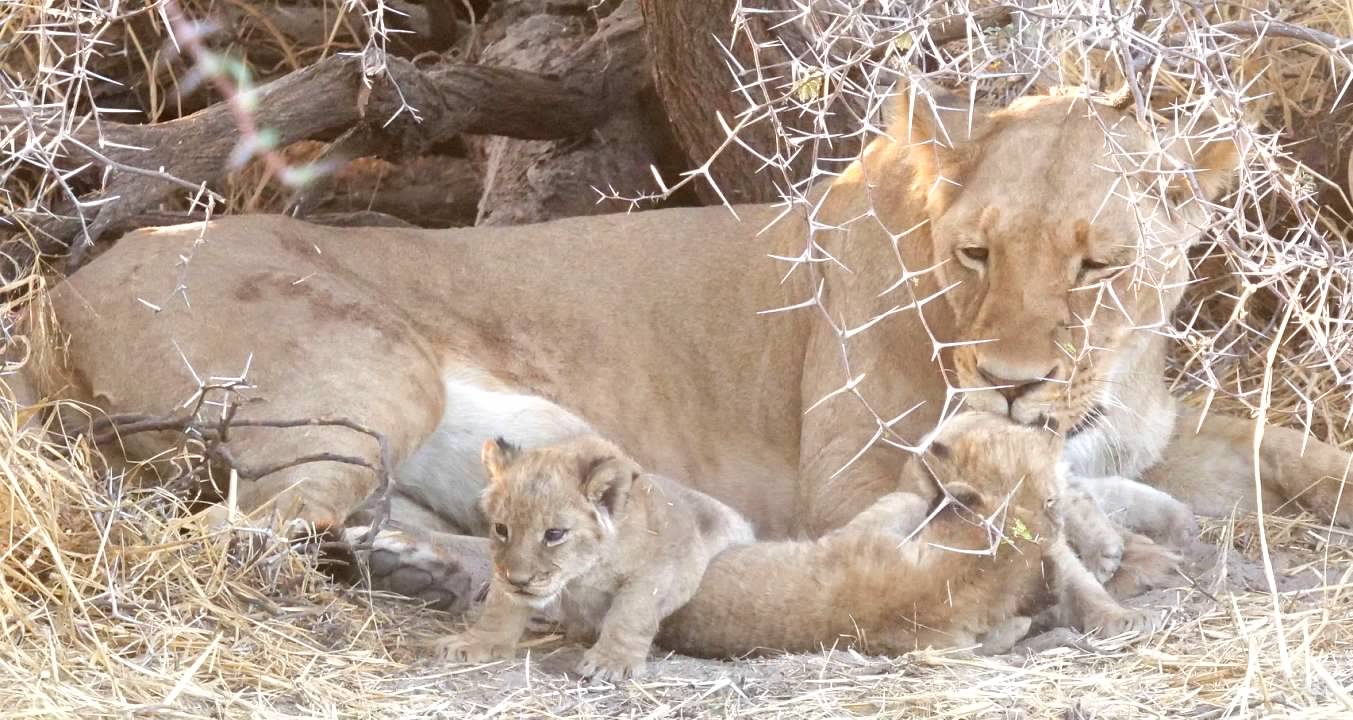
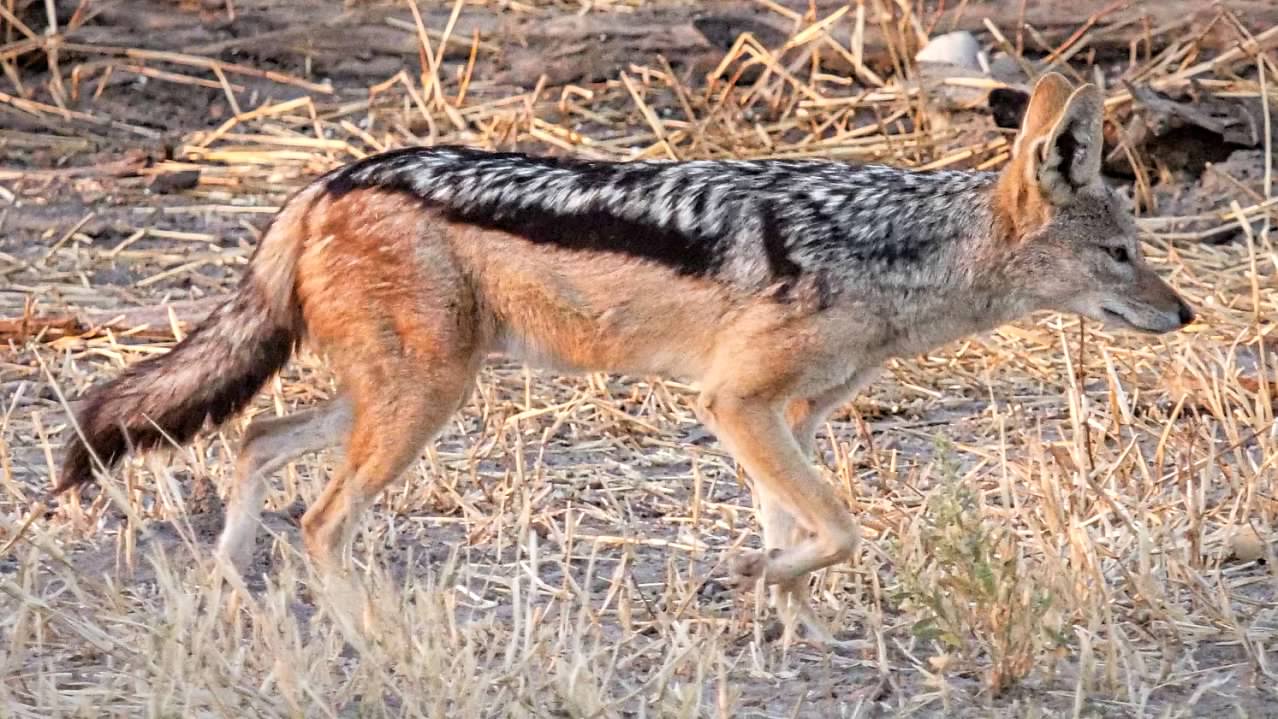
 The next morning, on our second game drive, we saw a female cheetah with three older cubs. Unfortunately, her cubs were not used to the presence of the trucks, so they wouldn't settle in one place for long. We followed them through the bush for a while, hoping to get better views of them, before moving on to explore more of the area. We found evidence of leopards, specifically, the skin and bones of an impala hanging in a tree, and saw a number of eagles and vultures in the area, but weren't able to actually locate the leopard.
The next morning, on our second game drive, we saw a female cheetah with three older cubs. Unfortunately, her cubs were not used to the presence of the trucks, so they wouldn't settle in one place for long. We followed them through the bush for a while, hoping to get better views of them, before moving on to explore more of the area. We found evidence of leopards, specifically, the skin and bones of an impala hanging in a tree, and saw a number of eagles and vultures in the area, but weren't able to actually locate the leopard.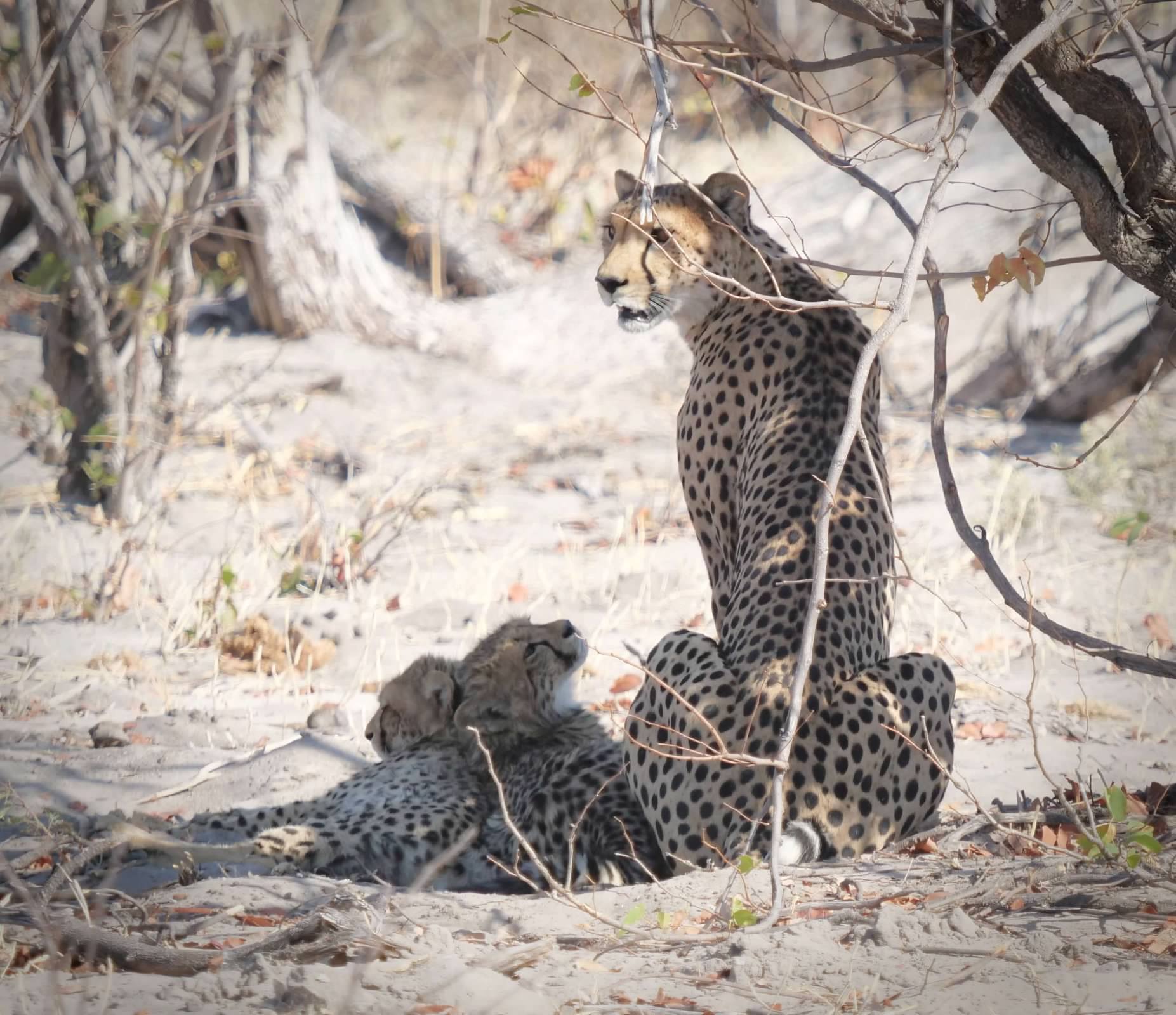
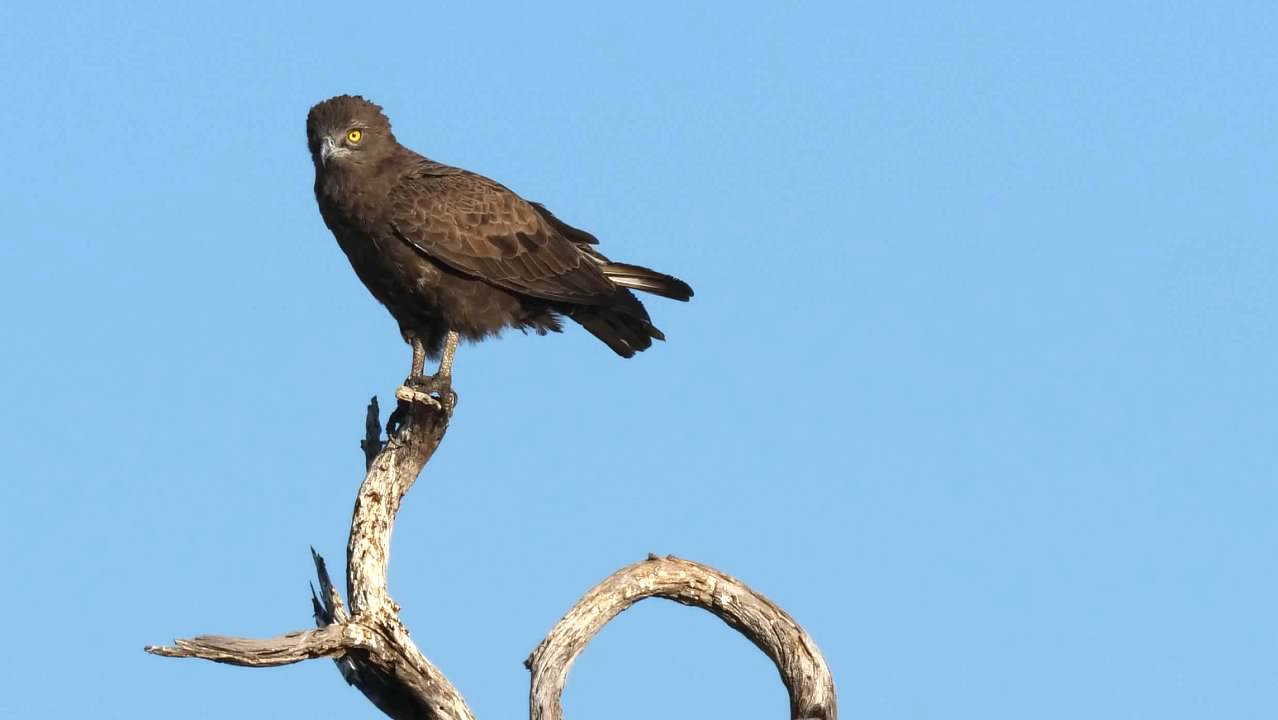
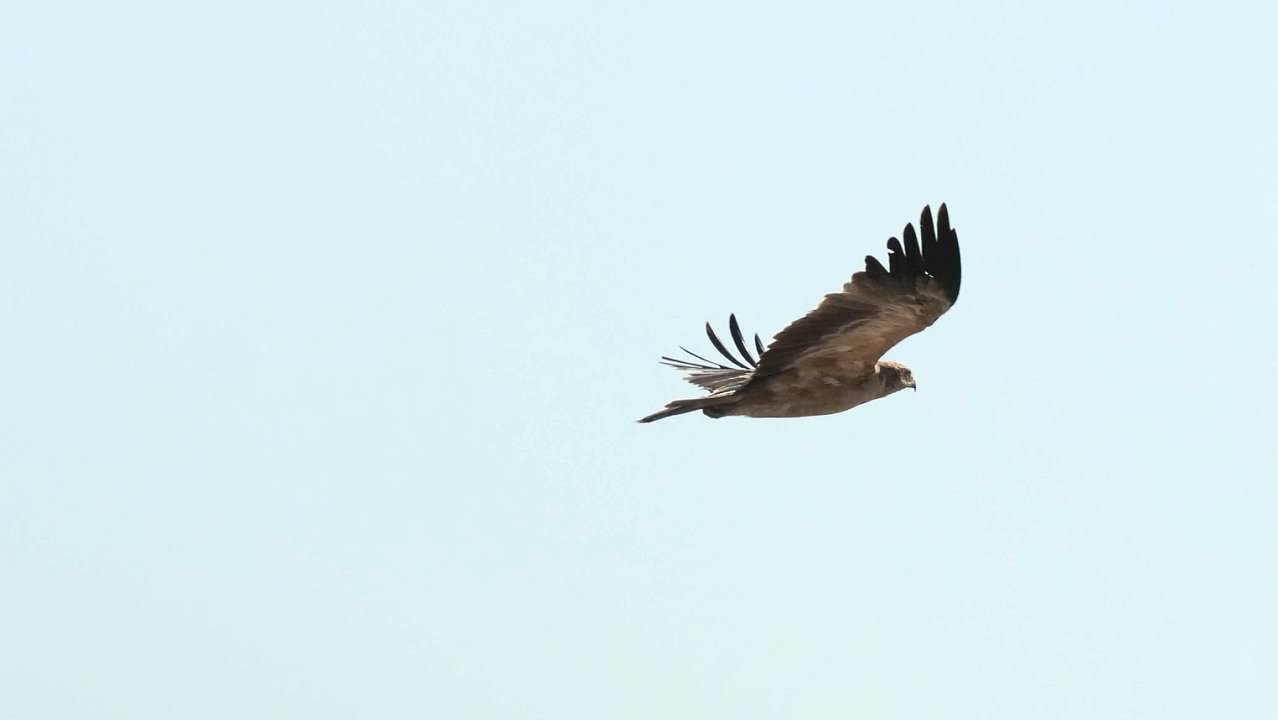
 That evening, we actually found the leopards. It was a mating pair, but the male was very skittish, so we had to keep following them as they moved. Eventually, they appeared to settle down, but we had to move along to allow another truck the opportunity to see (unlike Chobe, there was a limit of three trucks at a sighting here, so the truck that had been there longest had to pull away if a fourth truck arrived). We eventually circled back to see them again, but apparently, the pair had mated while we were gone, and the male had left the area. But we did get a good look at the female as she rested. When we stopped for our sundowners I was able to frame a sunset shot with an acacia tree to create my best sunset photo of the trip.
That evening, we actually found the leopards. It was a mating pair, but the male was very skittish, so we had to keep following them as they moved. Eventually, they appeared to settle down, but we had to move along to allow another truck the opportunity to see (unlike Chobe, there was a limit of three trucks at a sighting here, so the truck that had been there longest had to pull away if a fourth truck arrived). We eventually circled back to see them again, but apparently, the pair had mated while we were gone, and the male had left the area. But we did get a good look at the female as she rested. When we stopped for our sundowners I was able to frame a sunset shot with an acacia tree to create my best sunset photo of the trip.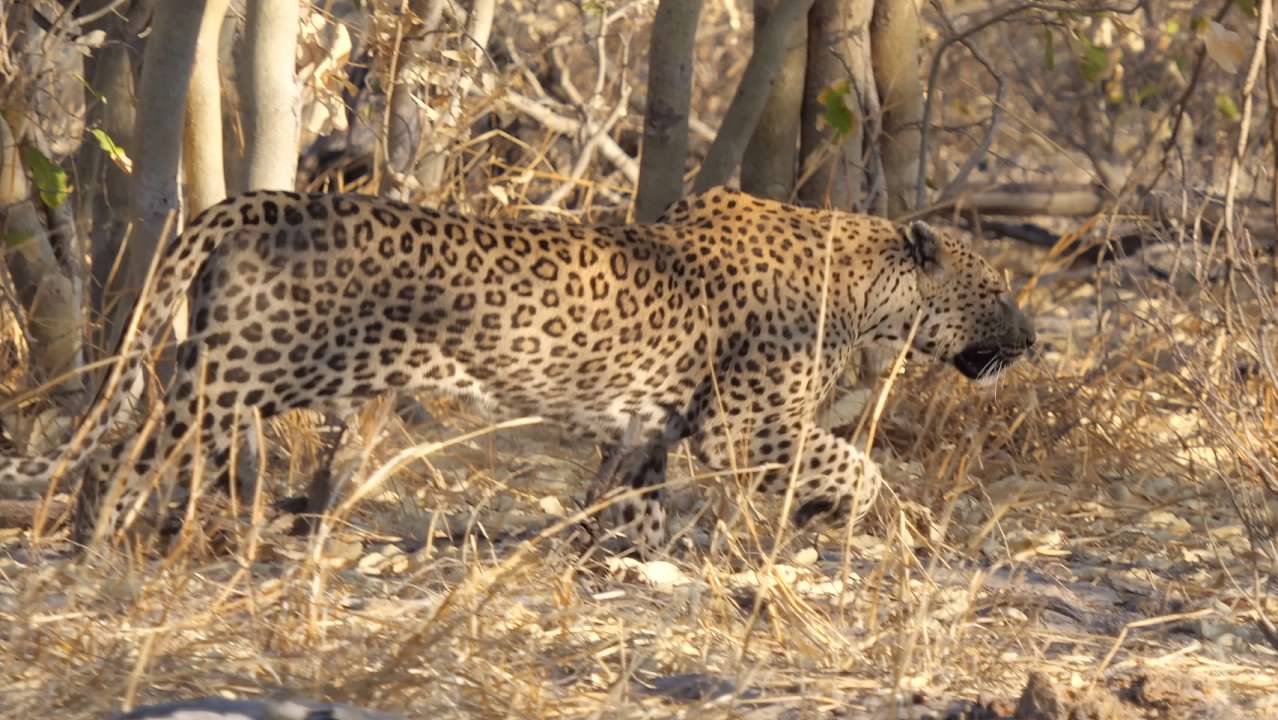
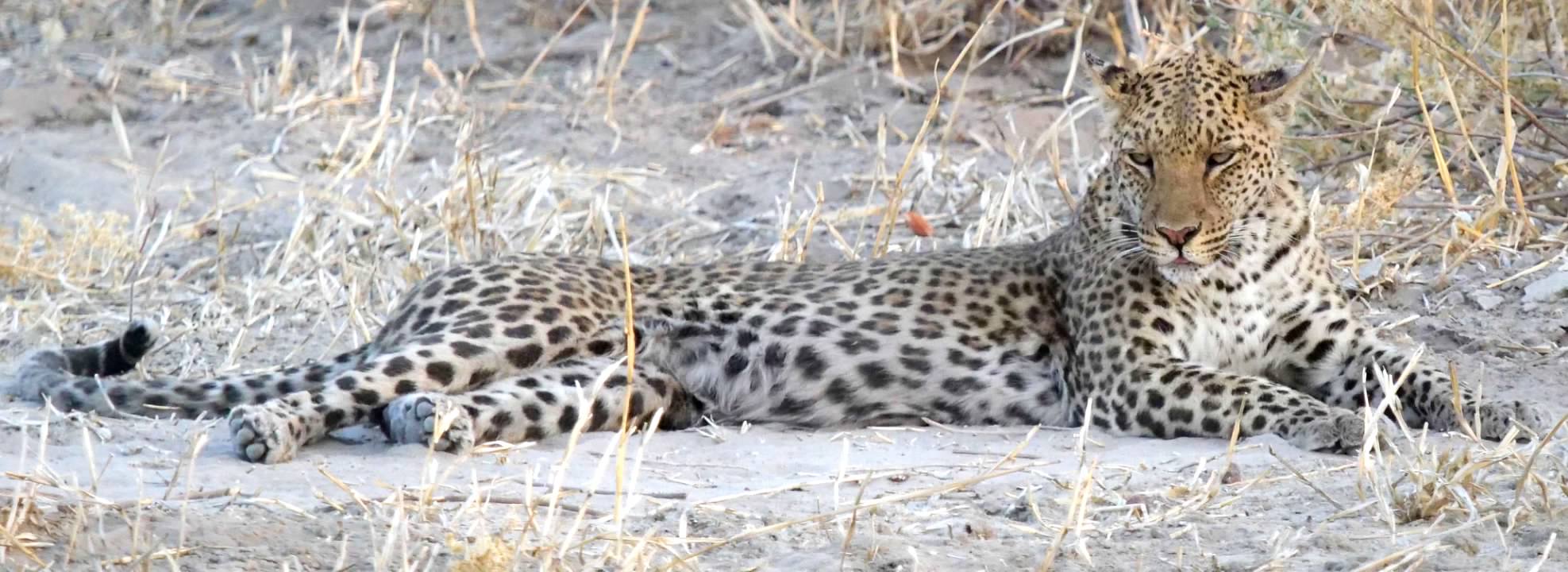
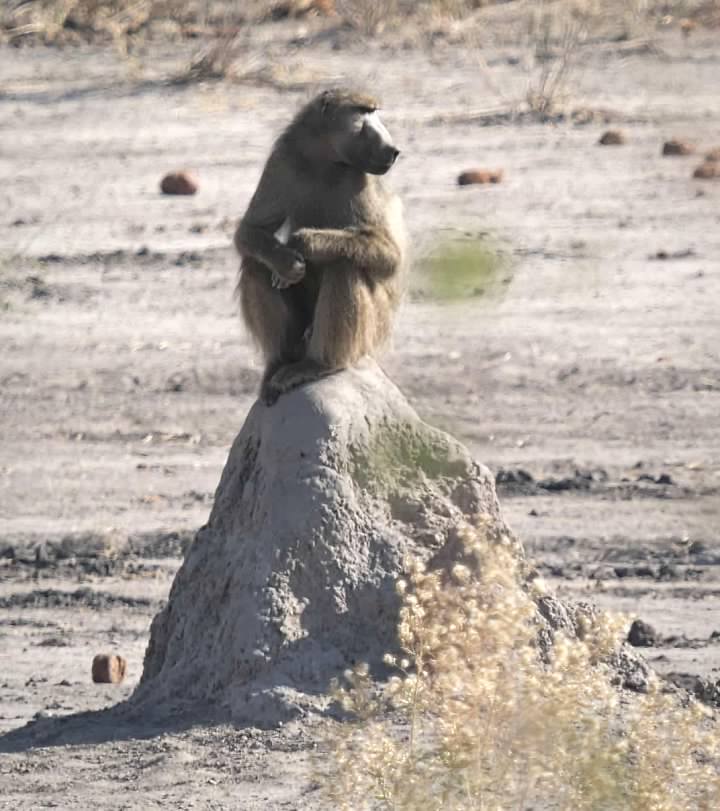
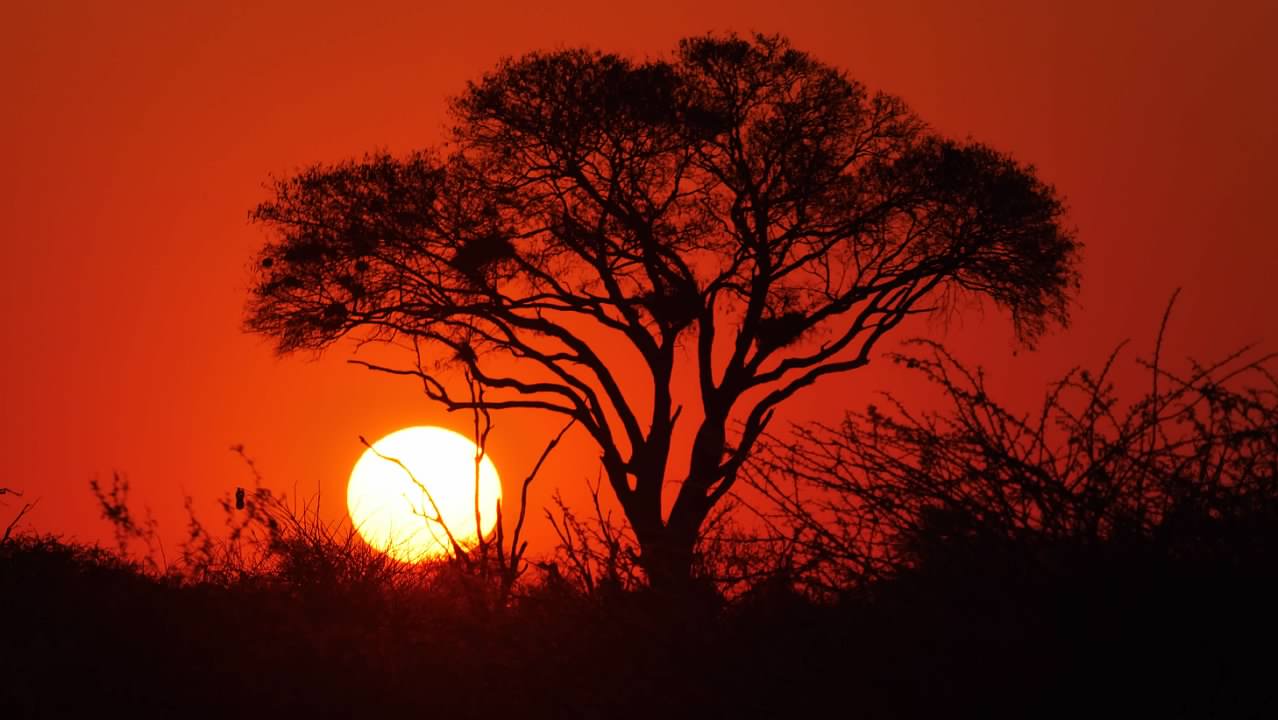 On the second morning, we set out across the sandy dry landscape towards the nearest portion of the wetlands, where we were going to be taken out for a short ride in mokorow, the traditional dugout canoes used by the tribes of this region. As we neared the water, the landscape became noticeably greener and we saw more wildlife feeding on the green grasses and drinking from the channels and ponds. Our mokorow ride provided us with a more intimate view of the wetlands, and we got to see water fowls nests, and aquatic plants that we wouldn't have seen from shore. After a full lunch served in the bush, we made our way back to our camp for the afternoon. It was while we were at camp that afternoon that we noticed clouds in the sky. These were the first clouds we had seen since our layover in Cape Town in the torrential rain. The camp staff took the clouds as a good sign that perhaps the rainy season might arrive early, after several years of drought.
On the second morning, we set out across the sandy dry landscape towards the nearest portion of the wetlands, where we were going to be taken out for a short ride in mokorow, the traditional dugout canoes used by the tribes of this region. As we neared the water, the landscape became noticeably greener and we saw more wildlife feeding on the green grasses and drinking from the channels and ponds. Our mokorow ride provided us with a more intimate view of the wetlands, and we got to see water fowls nests, and aquatic plants that we wouldn't have seen from shore. After a full lunch served in the bush, we made our way back to our camp for the afternoon. It was while we were at camp that afternoon that we noticed clouds in the sky. These were the first clouds we had seen since our layover in Cape Town in the torrential rain. The camp staff took the clouds as a good sign that perhaps the rainy season might arrive early, after several years of drought.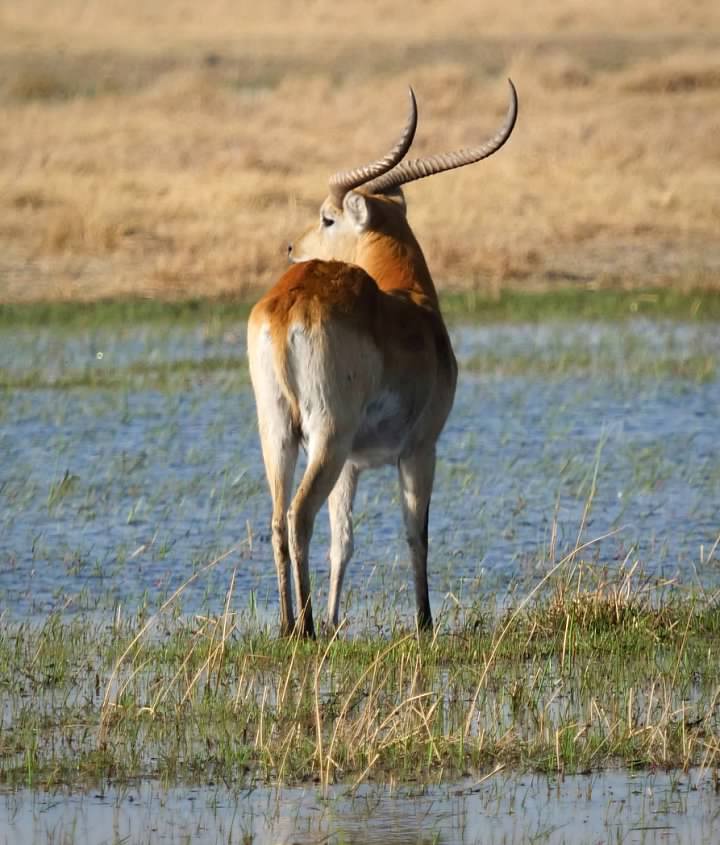
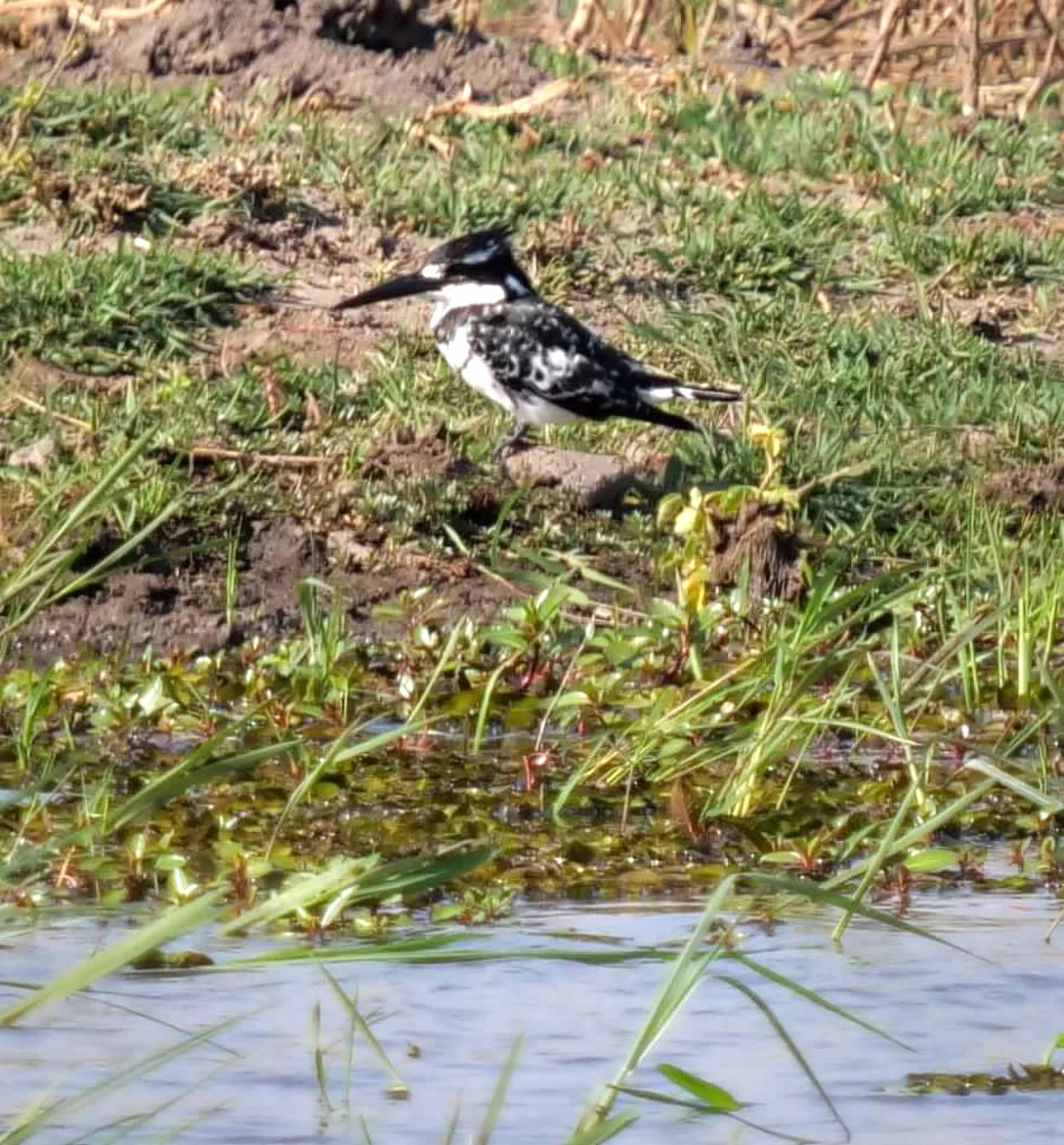
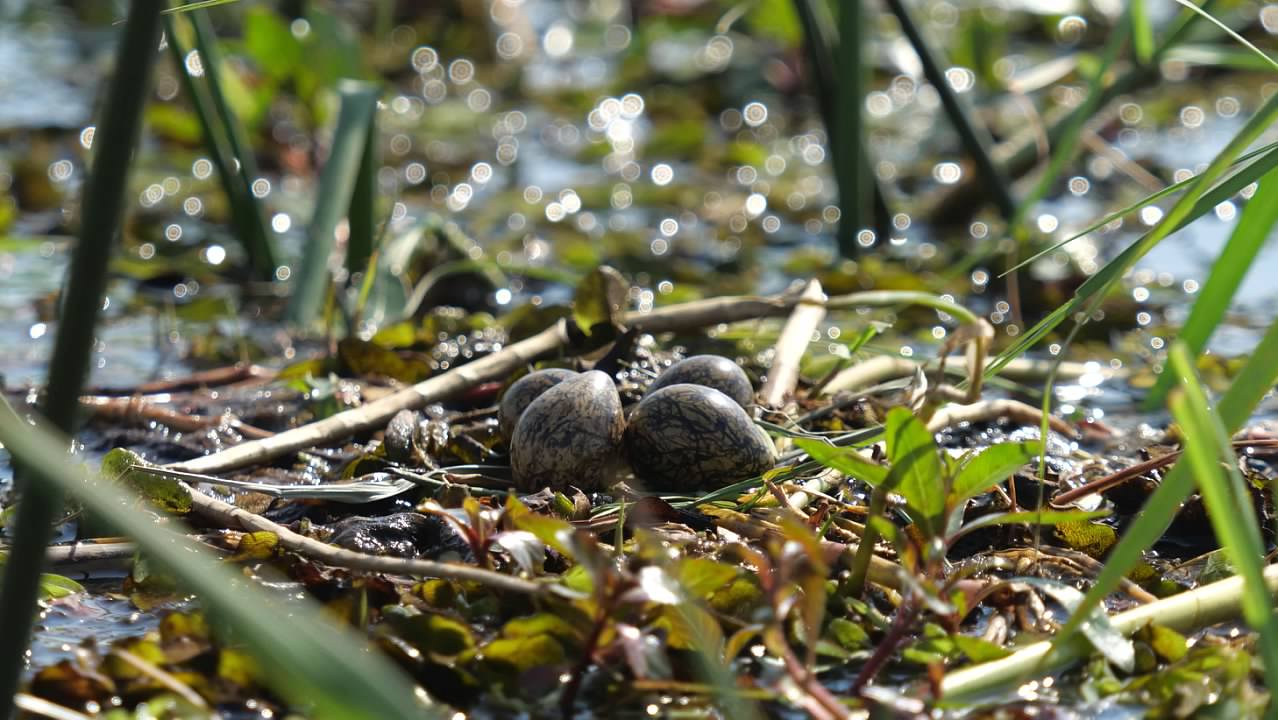

 Our final game drive, we found a large pack of the extremely endangered African Painted Dogs. The pack numbered about 35, with something like 17 puppies. The number of puppies was unusual, because typically only the alpha male and the alpha female mate, so there is normally only one litter at a time. But this pack had recently accepted two new females in, and apparently, the alpha male had mated with them as well, because they had puppies from three litters. With only about 7000 left in the wild, these dogs were demonized by ranchers and farmers, who would leave poisoned carcasses out for them. Efforts to educate the population about the risks to the species are ongoing, and it remains to be seen if they can be saved. We watched these dogs for a long time, especially the puppies, until the adult dogs all got up and trotted off into the bush to hunt. We followed the pack, and watched a couple of unsuccessful attempts to chase down impalas before it became too dark to continue.
Our final game drive, we found a large pack of the extremely endangered African Painted Dogs. The pack numbered about 35, with something like 17 puppies. The number of puppies was unusual, because typically only the alpha male and the alpha female mate, so there is normally only one litter at a time. But this pack had recently accepted two new females in, and apparently, the alpha male had mated with them as well, because they had puppies from three litters. With only about 7000 left in the wild, these dogs were demonized by ranchers and farmers, who would leave poisoned carcasses out for them. Efforts to educate the population about the risks to the species are ongoing, and it remains to be seen if they can be saved. We watched these dogs for a long time, especially the puppies, until the adult dogs all got up and trotted off into the bush to hunt. We followed the pack, and watched a couple of unsuccessful attempts to chase down impalas before it became too dark to continue.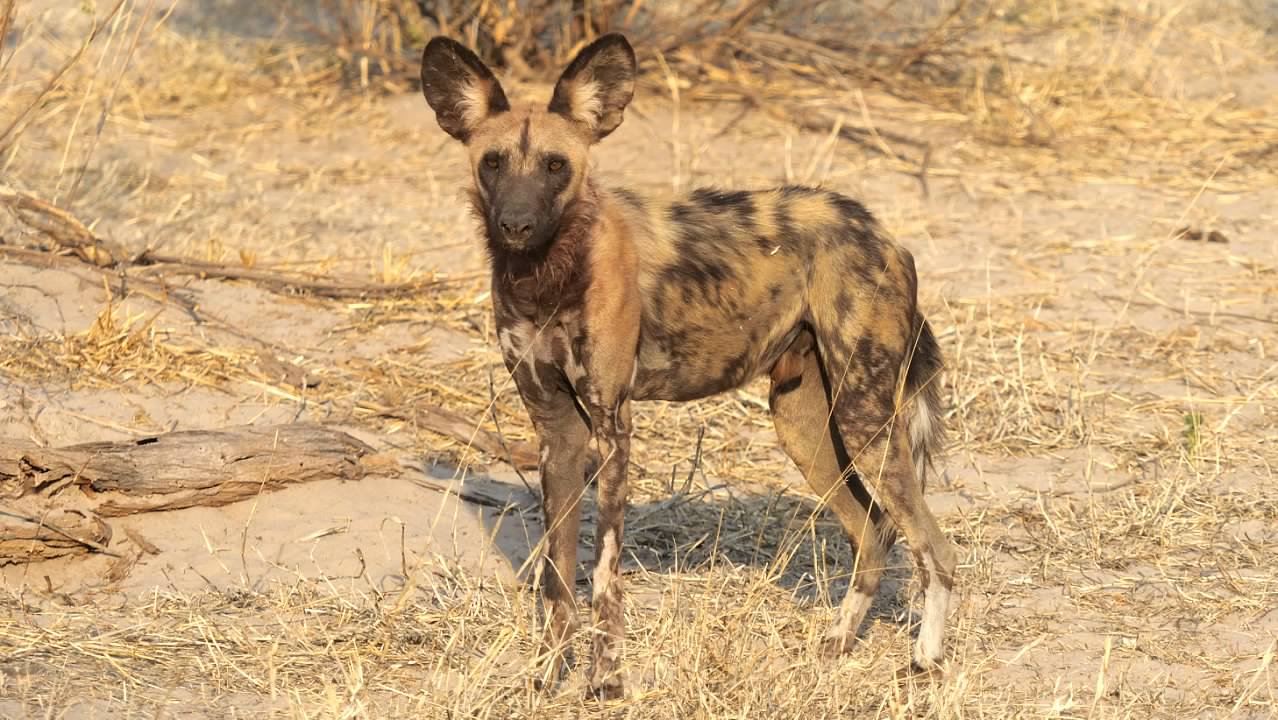
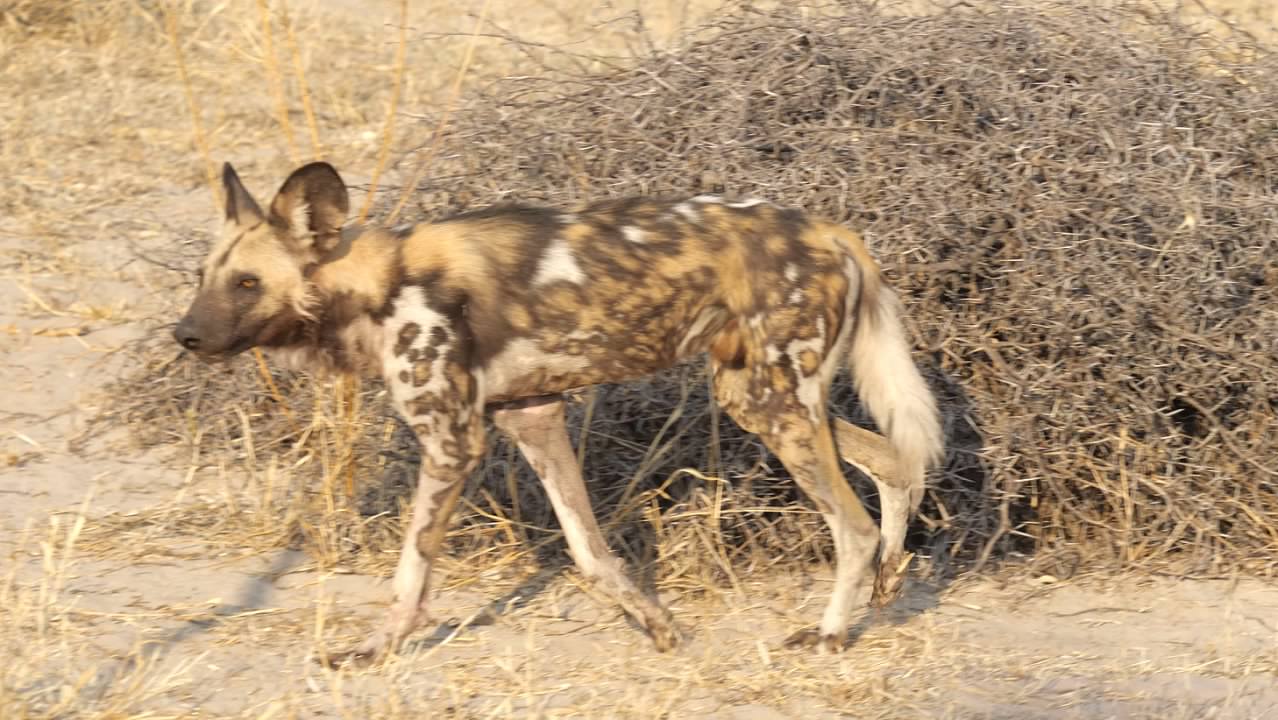
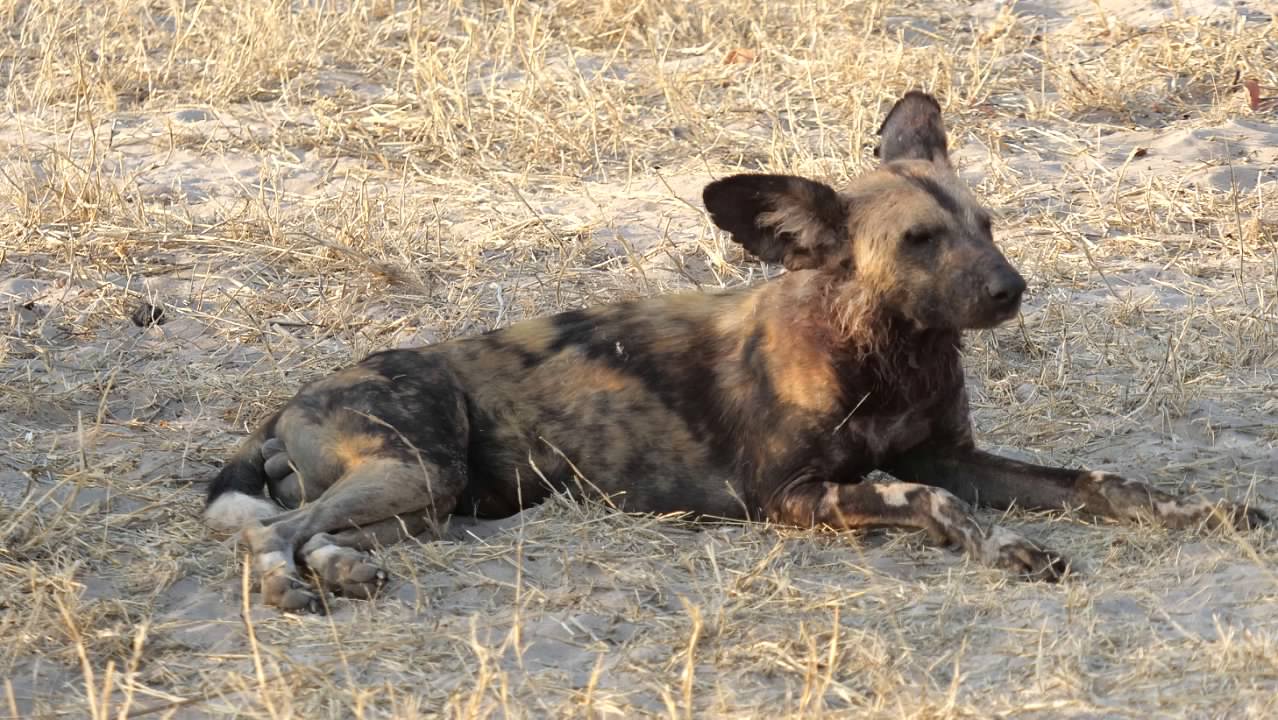
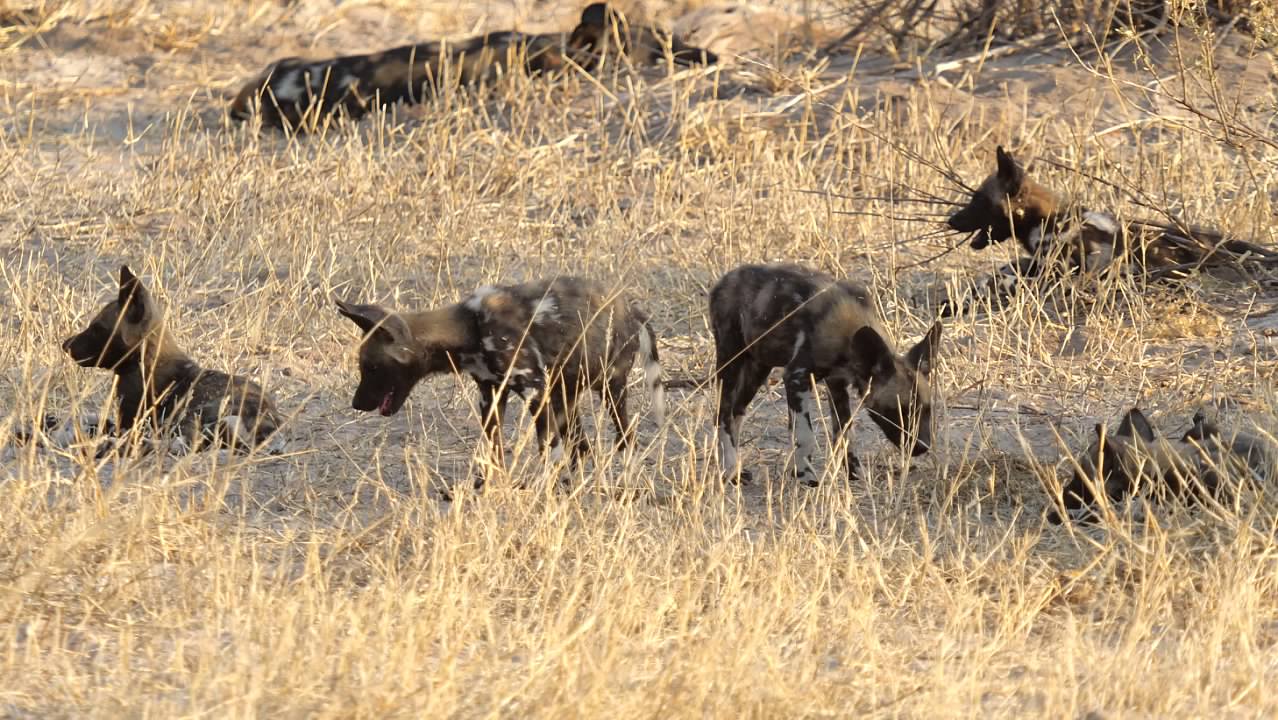

 Finally, as we were getting ready for breakfast the final morning, we saw our only hyena of the trip. It had come to the watering hole in front of the camp, and we watched as it finished and walked off across the bush in front of us. And that was our send off, ending the safari portion of our trip. We had enjoyed about two dozen game rides, at five locations, in four countries in the previous two weeks. The experiences were truly memorable, and in many ways we still have trouble believing it was all real. But even though we were no longer "on safari", the trip was far from finished.
Finally, as we were getting ready for breakfast the final morning, we saw our only hyena of the trip. It had come to the watering hole in front of the camp, and we watched as it finished and walked off across the bush in front of us. And that was our send off, ending the safari portion of our trip. We had enjoyed about two dozen game rides, at five locations, in four countries in the previous two weeks. The experiences were truly memorable, and in many ways we still have trouble believing it was all real. But even though we were no longer "on safari", the trip was far from finished.
We went on a total of five game rides here, and each one had a specific highlight. On our first drive, the afternoon we arrived, we found two female lions with their litters of cubs. When we first arrived, the two females and the older cubs (two or three months old) were sleeping near some logs and brush. As we watched, one of the females got up and walked over to some nearby bushes, where her newborn cubs (maybe three weeks old) were hidden. The older cubs were cute and playful, but the younger ones were absolutely adorable. Watching these cubs nurse was definitely one of the highlights of the trip. Later, we saw a black-backed jackal, a nocturnal predator that we hadn't yet seen, and as the sunset, I was finally able to get a shot of giraffes silhouetted against the setting sun!